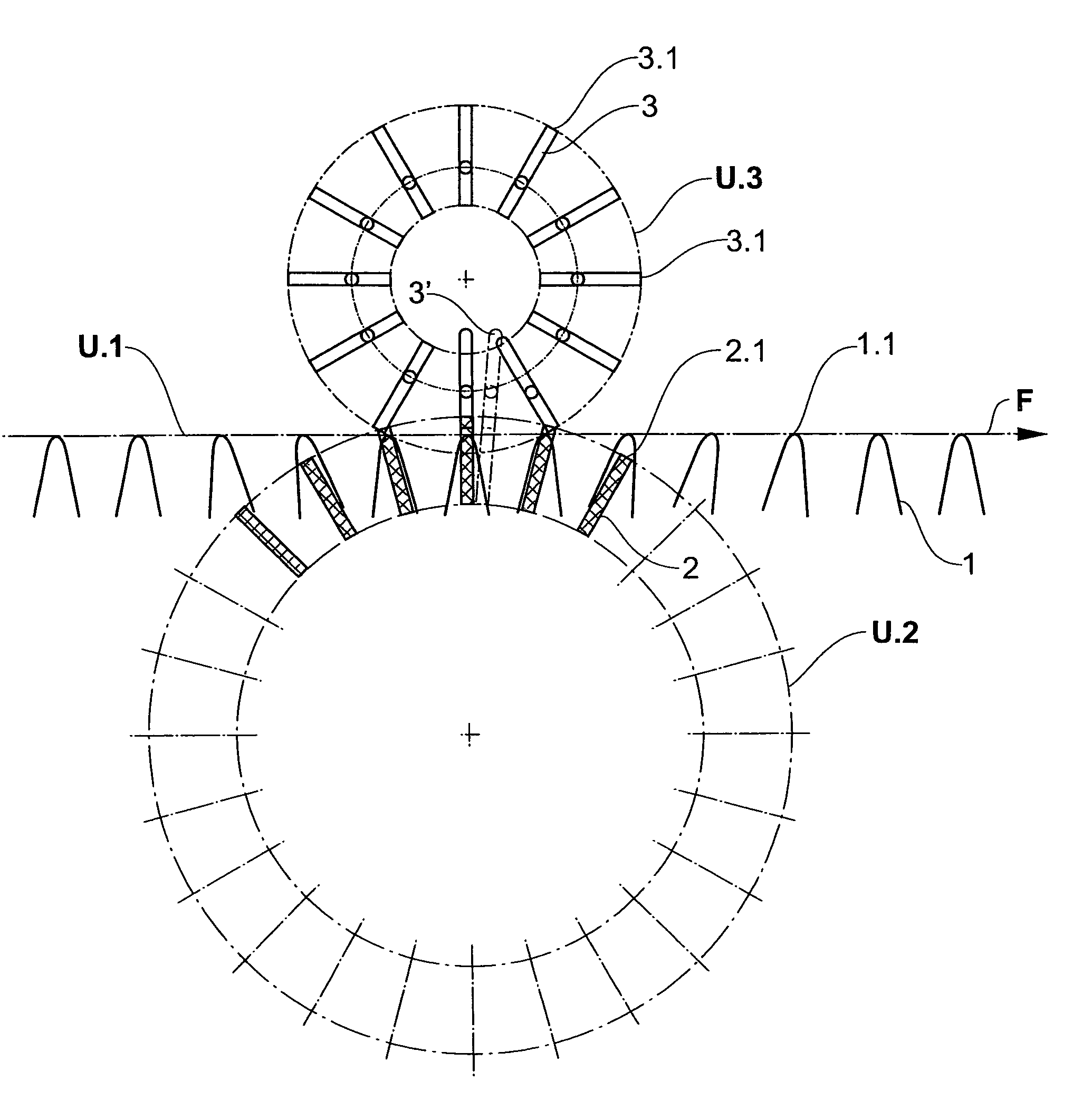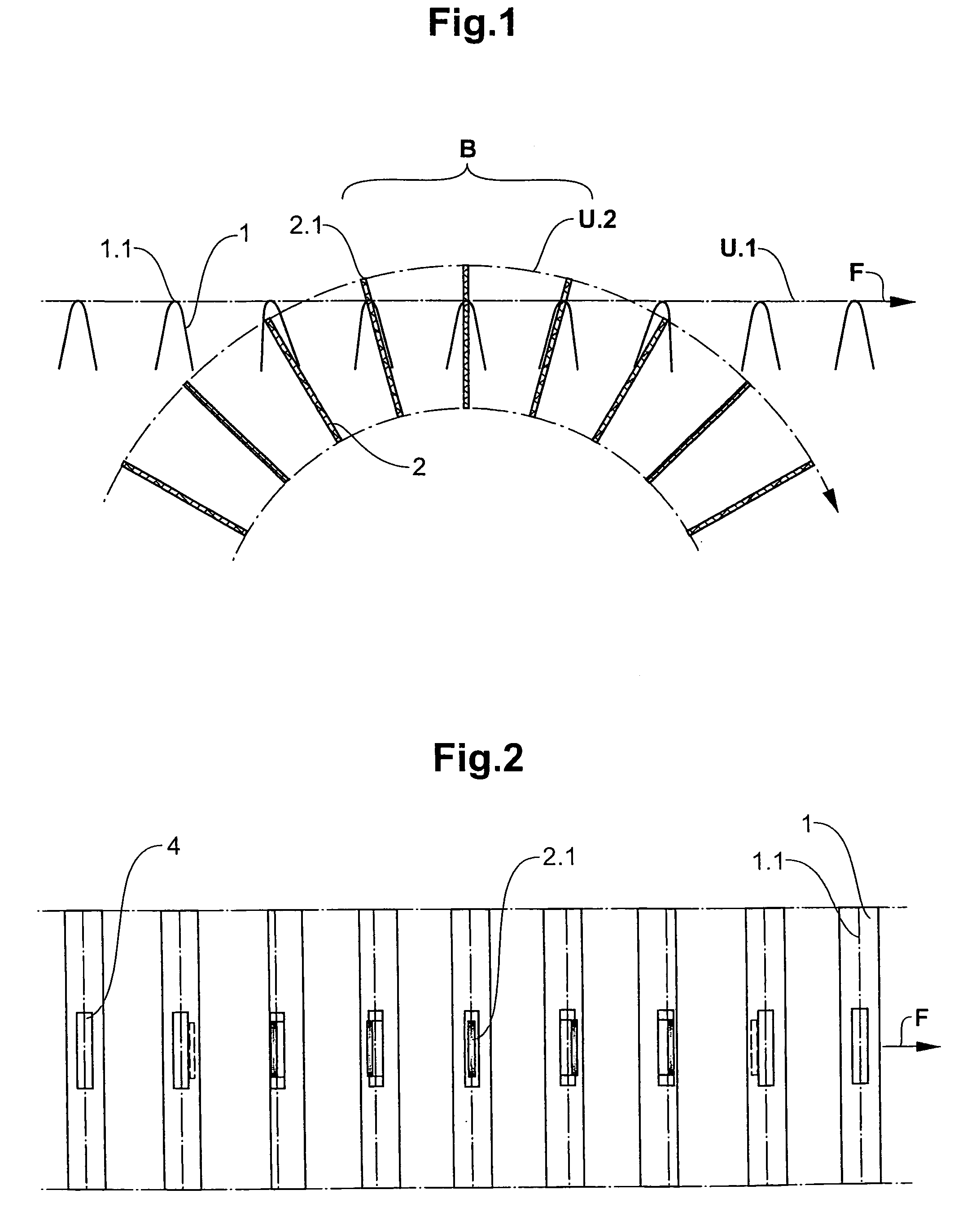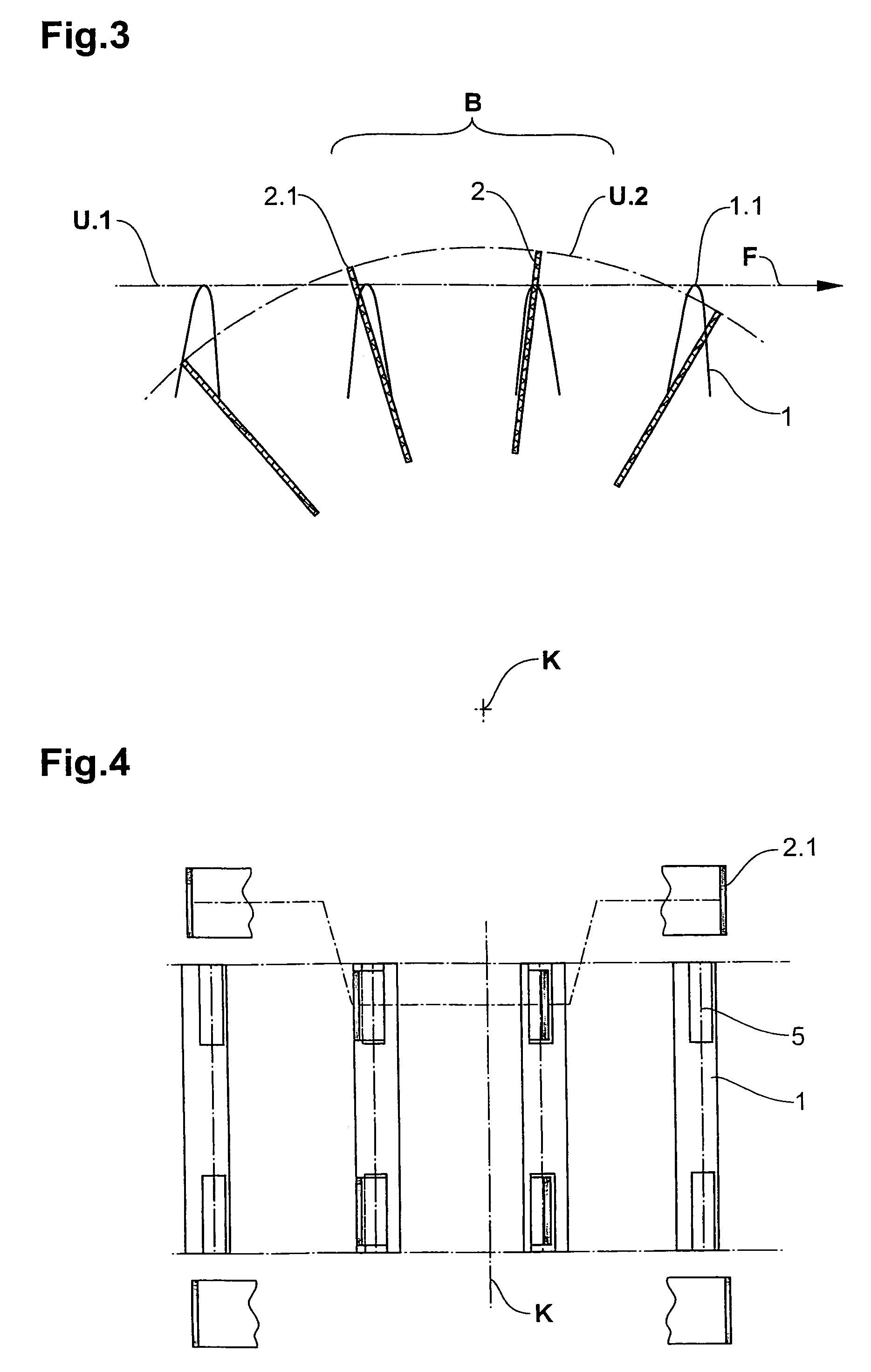Method and installation for processing printed products during conveyance
a technology for installing and processing printed products, which is applied in the direction of printing, article feeders, article delivery, etc., can solve the problems of long production losses, unfavorable movement of products lying on saddle-shaped supports, and high cost of equipping all saddle-shaped supports correspondingly, so as to achieve more independence of two circuits from on
- Summary
- Abstract
- Description
- Claims
- Application Information
AI Technical Summary
Benefits of technology
Problems solved by technology
Method used
Image
Examples
Embodiment Construction
[0019]FIGS. 1 and 2 illustrate the principle of a first, preferred embodiment of method and installation according to the invention, wherein only a part of the saddle-shaped supports 1 and of the counter-tools 2 as well as partial zones of the circuit U.1 of the saddle lines 1.1 of the saddle-shaped supports 1 and of the circuit U.2 of the distal ends 2.1 of the counter-tools are depicted. FIG. 1 illustrates the installation viewed from the side, i.e. with a direction of view essentially parallel to the saddle lines 1.1 of the saddle-shaped supports 1, FIG. 2 viewed from above, i.e. with a direction of view on to the saddle lines of the saddle-shaped supports 1.
[0020]The circuits U.1 and U.2 intersect at the entrance to the processing zone B and at the exit of the processing zone B, wherein the circuit U.2 extends above the track U.1 in the processing zone B. This means, that the distal ends 2.1 of the counter-tools 2 are positioned above the saddle lines 1.1 of the saddle-shaped su...
PUM
| Property | Measurement | Unit |
|---|---|---|
| area | aaaaa | aaaaa |
| processing | aaaaa | aaaaa |
| circumference | aaaaa | aaaaa |
Abstract
Description
Claims
Application Information
 Login to View More
Login to View More - R&D
- Intellectual Property
- Life Sciences
- Materials
- Tech Scout
- Unparalleled Data Quality
- Higher Quality Content
- 60% Fewer Hallucinations
Browse by: Latest US Patents, China's latest patents, Technical Efficacy Thesaurus, Application Domain, Technology Topic, Popular Technical Reports.
© 2025 PatSnap. All rights reserved.Legal|Privacy policy|Modern Slavery Act Transparency Statement|Sitemap|About US| Contact US: help@patsnap.com



